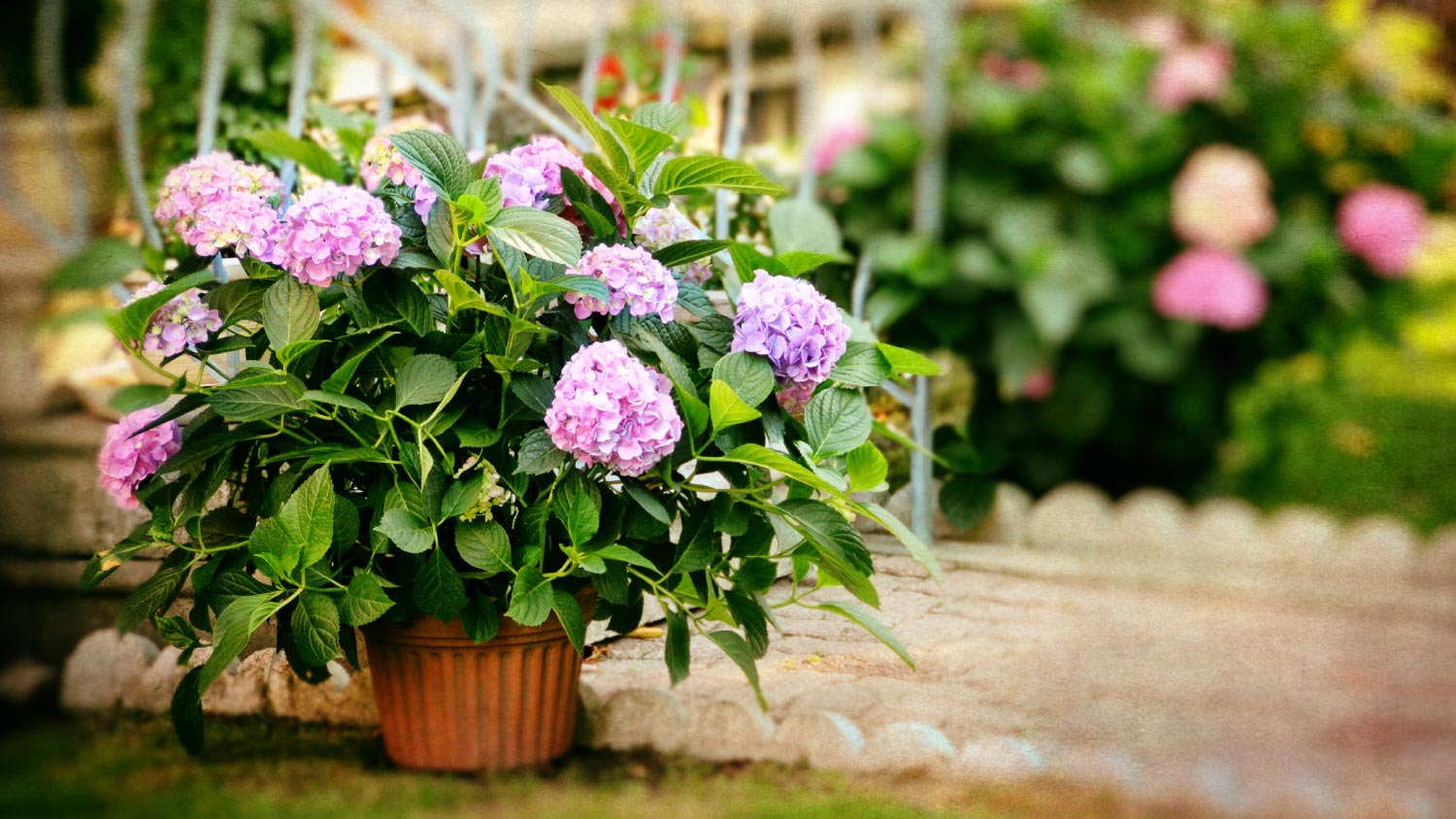7 Tips for Planting Flowers in Pots
Bring your garden to new heights with a container garden


Planting flowers in pots is a great way to add plants to hardscape areas where your favorite blooms can’t otherwise grow, or to add height and dimension into your existing garden landscape. However, container gardens need a little extra attention and TLC than those you plant in the ground which is why we put together a list of tips that will help your potted plants thrive in their compact spaces.
1. Size Matters
Make sure you’re getting the right sized pots for your plants, whether you’re growing orchids or begonias. As a general rule of (green) thumb, you want your pot to be at least 2 inches larger than the diameter of the plant. This will give your roots plenty of room to grow while ensuring you don’t run into any issues with drainage or fertilization.
2. Amend Your Soil
You’re going to want to make sure you’re using high-quality potting soil for your plants. There are a few reasons for this. First, good potting soil will drain easier, which can prevent your potted plants from getting the dreaded root rot. And second, it will cut down on the amount of fertilizer you’ll need to use.
3. Feed Your Plants
Container gardens will sometimes need a little extra TLC when it comes to making sure they’re getting enough nutrients. This is because the soil you use is likely to be less enriched with the things plants naturally come by on their own when they’re in the ground—like worms, decaying matter, and even microorganisms—and also because some of the good stuff in your dirt will naturally wash away when you water.
Check the care instructions of your plants to figure out how much fertilizer your flowers need.
4. Don’t Let Them Get Thirsty

Speaking of water, container gardens have much higher watering needs. Because they are in smaller containers that sit above the ground, these pots tend to absorb more heat and dry out faster. You should water most of your potted flowers once a day, with some of them needing a drink more frequently in higher heat. A good way to see if your plants are thirsty is to stick your finger in the soil. If you can’t feel any moisture, it’s time to hit your plants with some H2O.
5. Check Your Drainage
Remember that dreaded root rot we mentioned? Plants will experience rotting at the root level when sitting in dirt that doesn’t drain properly. To avoid this issue, you should always use flower pots with drain holes, or add rocks or gravel to the bottom of a pot that doesn’t have any so that you can ensure your plant is getting a chance to dry out between watering.
6. Pick the Right Flowers
Not all plants like living the high life. Some are more sensitive to the potential drought conditions of raised containers, while others simply need more room to sprawl. Try to choose plants that are well-known flowerpot lovers when you pick your blooms, like:
Geraniums
Marigolds
Certain varieties of begonias
Coleus
If you’re unsure of what types of flowers to plant, call a local landscaper to help you choose.
7. Take Up Space
Remember how we suggested using high-quality potting soil? Well, when you're trying to fill up larger containers, that can get pricey. That's why some garden pros like to use other things to fill the bottom of their pots. Empty water bottles, rocks, and even upside-down nursery pots can all fill the void below the root line, allowing you to use less dirt (saving you more green).



















